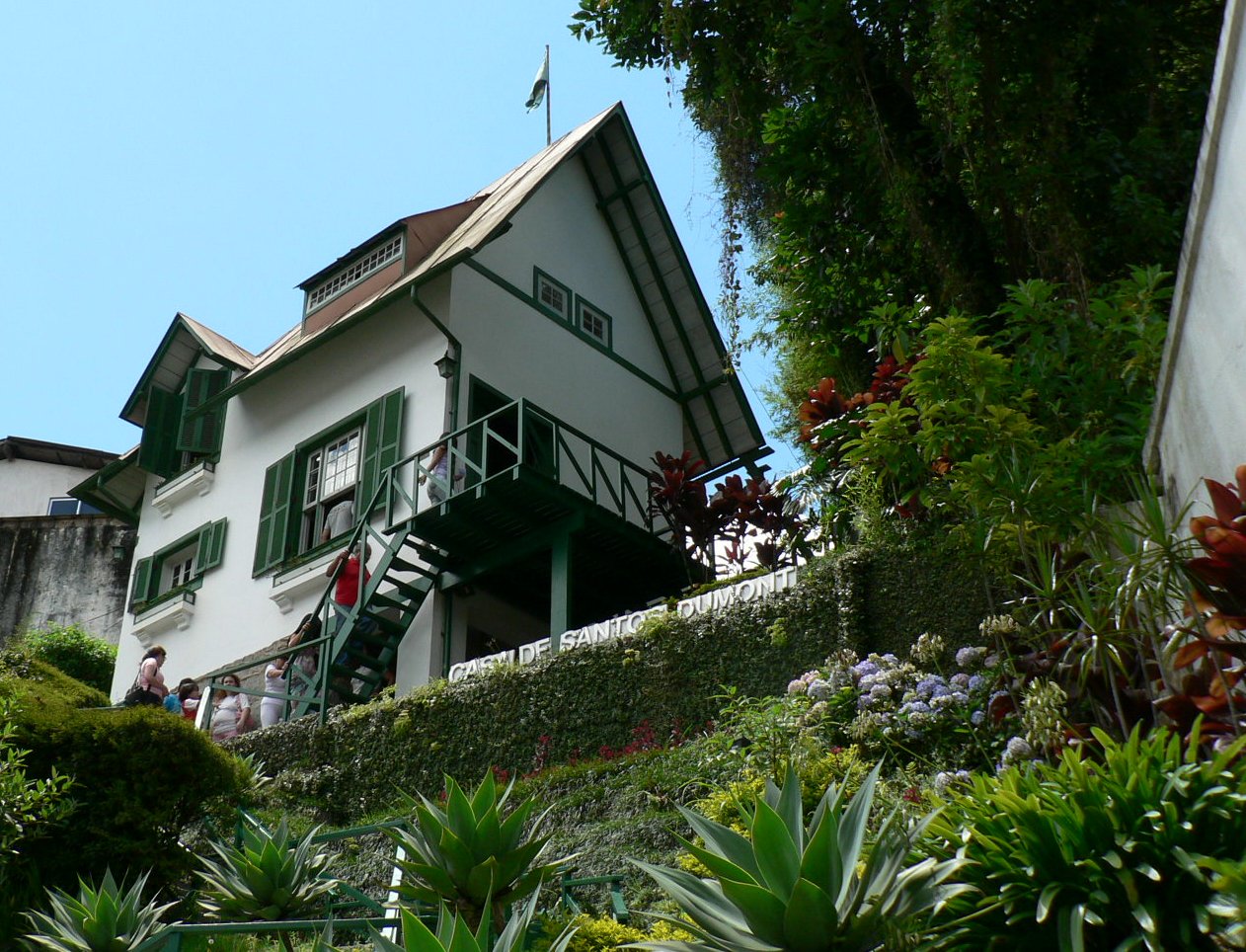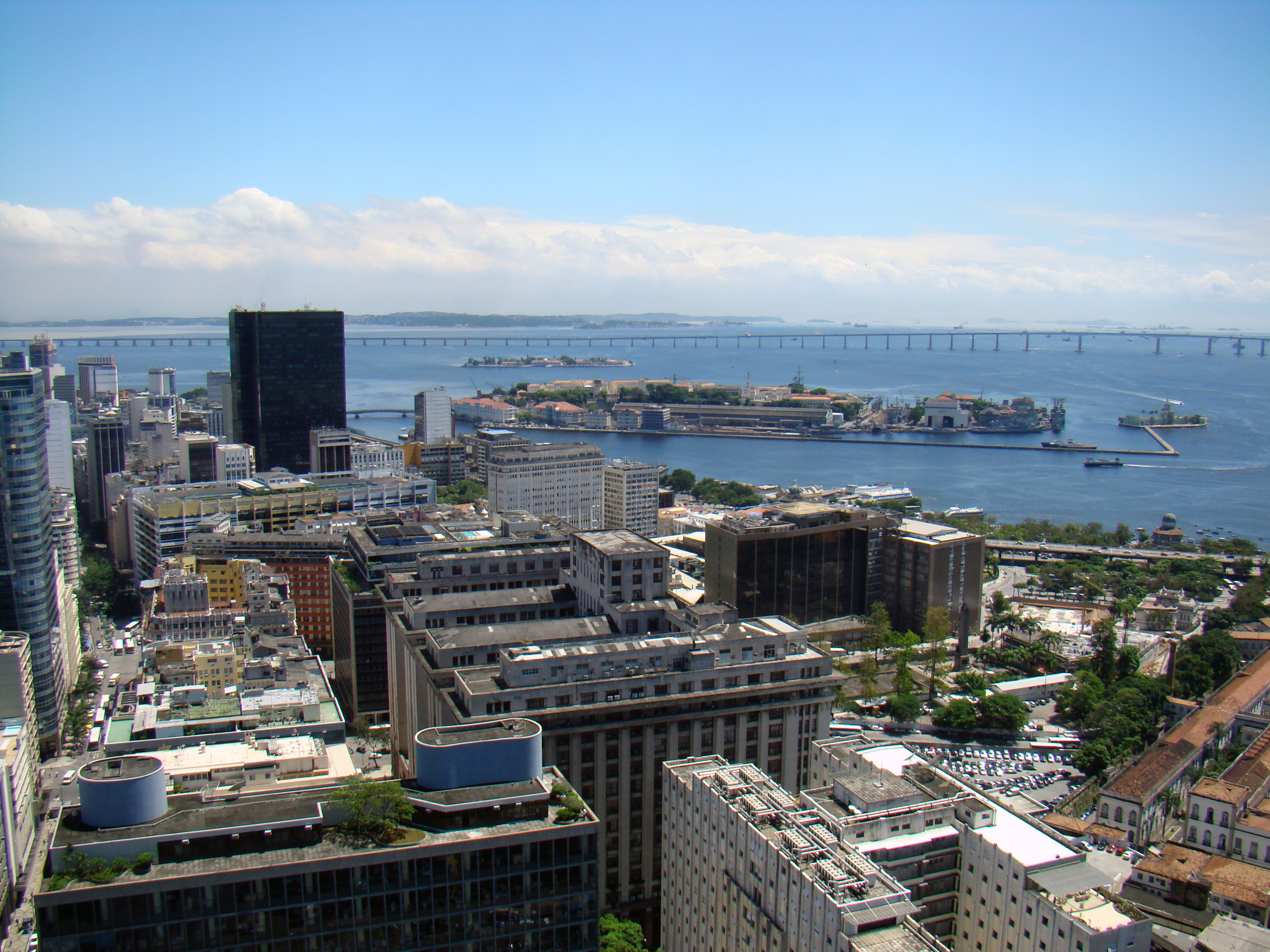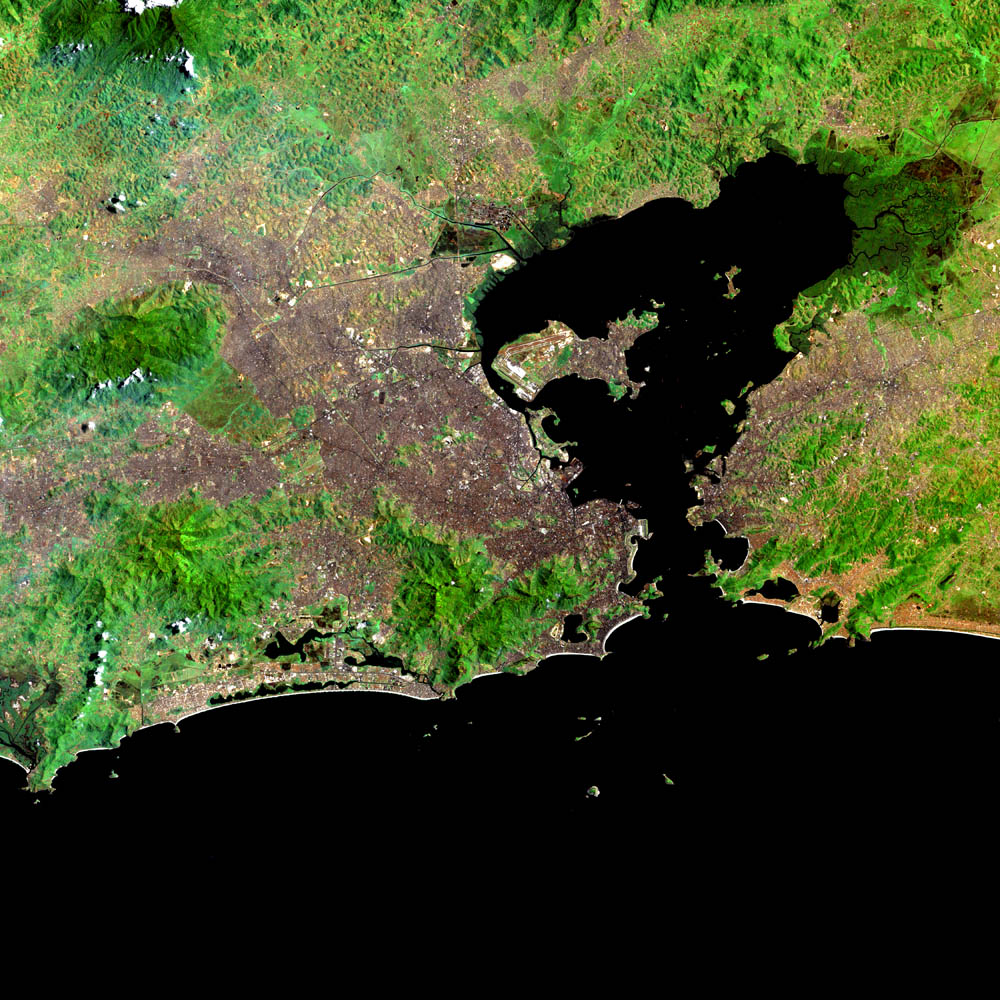|
Petrópolis
Petrópolis (), also known as the Imperial City, is a municipality in the Southeast Region of Brazil. It is located in the state of Rio de Janeiro, northeast of the city of Rio de Janeiro. According to the 2022 Brazilian census, Petrópolis municipality had a population of 278,881 inhabitants. Besides being the largest and most populous city in the , the city also has the largest GDP and HDI in the region. The town's name ("City of Peter") honors Pedro II, the last Emperor of Brazil, who is entombed there at the Cathedral of Saint Peter of Alcantara. The city was the summer residence of the Brazilian Emperors and aristocrats in the 19th century, and was the official capital of the state of Rio de Janeiro during the First Brazilian Republic, between 1894 and 1902. There are projects to annex Petrópolis again to the Metropolitan Region of Rio de Janeiro, because it is linked to the capital by political and economic ties and contains one of the state's highest HDIs. Histor ... [...More Info...] [...Related Items...] OR: [Wikipedia] [Google] [Baidu] |
Rio De Janeiro (state)
Rio de Janeiro () is one of the States of Brazil, 27 federative units of Brazil. It has the second largest economy of Brazil, with the largest being that of the state of São Paulo (state), São Paulo. The state, which has 8.2% of the Brazilian population, is responsible for 9.2% of the Brazilian Gross domestic product, GDP. The state of Rio de Janeiro is located within the Brazilian geopolitical region classified as the Southeast Region, Brazil, Southeast (assigned by Brazilian Institute of Geography and Statistics, IBGE). Rio de Janeiro shares borders with all the other states in the same Southeast macroregion: Minas Gerais (North, N and Ordinal directions, NW), Espírito Santo (Ordinal direction, NE) and São Paulo (state), São Paulo (Ordinal directions, SW). It is bounded on the east and south by the South Atlantic Ocean. Rio de Janeiro has an area of . Its capital is the city of Rio de Janeiro, Rio de Janeiro, Rio de Janeiro, which was the capital of the Portuguese Colonial ... [...More Info...] [...Related Items...] OR: [Wikipedia] [Google] [Baidu] |
German Brazilians
German Brazilians (German language, German: ''Deutschbrasilianer'', Hunsrik: ''Deitschbrasiliooner'', ) refers to Brazilians of full or partial Germans, German ancestry. German Brazilians live mostly in the country's South Region, Brazil, South Region, with a smaller but still significant percentage living in the Southeast Region, Brazil, Southeast Region. Between 1824 and 1972, about 260,000 Germans settled in Brazil, the fifth largest nationality to immigrate after the Portuguese Brazilians, Portuguese, the Italian Brazilians, Italians, the Spanish Brazilians, Spanish, and the Japanese Brazilians, Japanese. By 1940, the German diaspora in Brazil totaled about a million. The rapid increase in numbers was due to a relatively high birth rate, the highest in Brazil amongst immigrant groups although still lower than that of the local population. The majority settled in the Brazilian states of Rio Grande do Sul, Santa Catarina (state), Santa Catarina, Paraná (state), Paraná, S ... [...More Info...] [...Related Items...] OR: [Wikipedia] [Google] [Baidu] |
Pedro II Of Brazil
''Don (honorific), Dom'' PedroII (Pedro de Alcântara João Carlos Leopoldo Salvador Bibiano Francisco Xavier de Paula Leocádio Miguel Gabriel Rafael Gonzaga; 2 December 1825 – 5 December 1891), nicknamed the Magnanimous (), was the List of monarchs of Brazil, second and last monarch of the Empire of Brazil, reigning for over 58 years. Pedro II was born in Rio de Janeiro, the seventh child of Emperor Dom Pedro I of Brazil and Empress Dona Maria Leopoldina and thus a member of the Brazilian branch of the House of Braganza (). Abdication of Pedro I of Brazil, His father's abrupt abdication and departure to Europe in 1831 left the five-year-old as emperor and led to a lonely childhood and adolescence, obliged to spend his time studying in preparation for rule. His experiences with court intrigues and political disputes during this period greatly affected his later character; he grew into a man with a strong sense of duty and devotion toward his country and his people, yet in ... [...More Info...] [...Related Items...] OR: [Wikipedia] [Google] [Baidu] |
Greater Rio De Janeiro
Greater Rio de Janeiro, officially the Rio de Janeiro Metropolitan Region (''Grande Rio'', officially ''Região Metropolitana do Rio de Janeiro'', in Portuguese) is a large metropolitan area located in Rio de Janeiro state in Brazil, the second largest in Brazil and third largest in South America. It consists of 22 municipalities, including the state capital, Rio de Janeiro. The metropolitan area of Rio de Janeiro is known as a historical, cultural and economic centre of Brazil, with a total population of 12 million inhabitants. The region was first officially defined on July 1, 1974, less than 1 year before the fusion of Guanabara into Rio de Janeiro. Several municipalities show a high level of conurbation, with Rio de Janeiro–Baixada Fluminense and Niterói– São Gonçalo being the most clear examples. It was changed several times to include or remove different cities in different moments of the history, in the years 1993, 2001, 2002, 2009, 2013 and 2018. The wat ... [...More Info...] [...Related Items...] OR: [Wikipedia] [Google] [Baidu] |
List Of Municipalities In Rio De Janeiro
This is a list of the municipalities in the state of Rio de Janeiro (RJ), located in the Southeast Region of Brazil. Rio de Janeiro is divided into 92 municipalities, which were, until 2017, grouped into 18 microregions, which were grouped into 6 mesoregions. List See also *Geography of Brazil *List of cities in Brazil * Gallery of flags of municipalities of Rio de Janeiro Notes References {{Municipalities of Brazil Rio de Janeiro Municipalities A municipality is usually a single administrative division having municipal corporation, corporate status and powers of self-government or jurisdiction as granted by national and regional laws to which it is subordinate. The term ''municipality' ... * ... [...More Info...] [...Related Items...] OR: [Wikipedia] [Google] [Baidu] |
List Of Monarchs Of Brazil
The monarchs of Brazil ( Portuguese: ''monarcas do Brasil'') were the imperial heads of state and hereditary rulers of Brazil from the House of Braganza that reigned from the creation of the Brazilian monarchy in 1815 as a constituent kingdom of the United Kingdom of Portugal, Brazil and the Algarves until the republican coup d'état that overthrew the Empire of Brazil in 1889.Bandeira, Moniz. ''Casa da Torre de Garcia d'Avila''. Editora Record, 2000, pp. 423–425 The coast of the territory which would become known as Brazil was first explored by Portuguese navigators on 22 April 1500. This territory was subsequently colonized by the Portuguese crown. Since the transfer of the Portuguese court to Brazil in 1808, colonial rule had de facto ended. On 16 December 1815, Prince Regent John, the future king John VI, raised Brazil to the status of a kingdom, thus making his mother, Maria I, the reigning queen, the first monarch of Brazil. The next year, 20 March 1816, John succee ... [...More Info...] [...Related Items...] OR: [Wikipedia] [Google] [Baidu] |
Juiz De Fora
Juiz de Fora (; ), also known as J.F., is a city in the southeastern Brazilian state of Minas Gerais, approximately from the state border with Rio de Janeiro (state), Rio de Janeiro. According to the 2022 census the current population is 540,756 inhabitants. The geographical area of the municipality is . The city's location was a key factor in its economic and demographic development since it is situated between the three most important financial and economic metropolises of Southeast Region, Brazil, southeast Brazil (and also the three largest urban sprawls of the country): Rio de Janeiro (), Belo Horizonte () and São Paulo (). Major highways connect Juiz de Fora with these three metropolitan areas, the most important being the BR 040 which connects Brasília with Rio de Janeiro via Belo Horizonte. The city is built on the Paraibuna River (Minas Gerais), Paraibuna, a major tributary of the Paraíba do Sul river. History The origins of Juiz de Fora can be traced back t ... [...More Info...] [...Related Items...] OR: [Wikipedia] [Google] [Baidu] |
States Of Brazil
The federative units of Brazil () are subnational entities with a certain degree of autonomy (self-government, self-regulation, and self-collection) and endowed with their own government and constitution, which together form the Brazil, Federative Republic of Brazil. There are #List, 26 states (') and Federal District (Brazil), one federal district ('). The states are generally based on historical, conventional borders which have developed over time. The states are divided into municipalities of Brazil, municipalities, while the Federal District (Brazil), Federal District assumes the competences of both a state and a municipality. Government The government of each state of Brazil is divided into executive branch, executive, legislative branch, legislative and judiciary branches. The state executive branch is headed by a state governor and includes a vice governor, both elected by the citizens of the state. The governor appoints several secretaries of state (each one in charge ... [...More Info...] [...Related Items...] OR: [Wikipedia] [Google] [Baidu] |
Mayor–council Government
A mayor–council government is a system of local government in which a mayor who is directly elected by the voters acts as chief executive, while a separately elected city council constitutes the legislative body. It is one of the two most common forms of local government in the United States, and is the form most frequently adopted in large cities, although the other common form, council–manager government, is the local government form of more municipalities. The form may be categorized into two main variations depending on the relative power of the mayor compared to the council, the ''strong-mayor'' variant and the ''weak-mayor'' variant. In a typical ''strong-mayor'' system, the elected mayor is granted almost total administrative authority with the power to appoint and dismiss department heads, although some city charters or prevailing state law may require council ratification. In such a system, the mayor's administrative staff often prepares the city budget, although th ... [...More Info...] [...Related Items...] OR: [Wikipedia] [Google] [Baidu] |
List Of Sovereign States
The following is a list providing an overview of sovereign states around the world with information on their status and recognition of their sovereignty. The 205 listed states can be divided into three categories based on membership within the United Nations System: 193 member states of the United Nations, UN member states, two United Nations General Assembly observers#Current non-member observers, UN General Assembly non-member observer states, and ten other states. The ''sovereignty dispute'' column indicates states having undisputed sovereignty (188 states, of which there are 187 UN member states and one UN General Assembly non-member observer state), states having disputed sovereignty (15 states, of which there are six UN member states, one UN General Assembly non-member observer state, and eight de facto states), and states having a political status of the Cook Islands and Niue, special political status (two states, both in associated state, free association with New ... [...More Info...] [...Related Items...] OR: [Wikipedia] [Google] [Baidu] |
Macadam
Macadam is a type of road construction pioneered by Scottish engineer John Loudon McAdam , in which crushed stone is placed in shallow, convex layers and compacted thoroughly. A binding layer of stone dust (crushed stone from the original material) may form; it may also, after rolling, be covered with a cement or bituminous binder to keep dust and stones together. The method simplified what had been considered state-of-the-art at that point. Predecessors Pierre-Marie-Jérôme Trésaguet Pierre-Marie-Jérôme Trésaguet is sometimes considered the first person to bring post-Roman science to road building. A Frenchman from an engineering family, he worked paving roads in Paris from 1757 to 1764. As chief engineer of road construction of Limoges, he had opportunity to develop a better and cheaper method of road construction. In 1775, Tresaguet became engineer-general and presented his answer for road improvement in France, which soon became standard practice there. Paperback ... [...More Info...] [...Related Items...] OR: [Wikipedia] [Google] [Baidu] |







